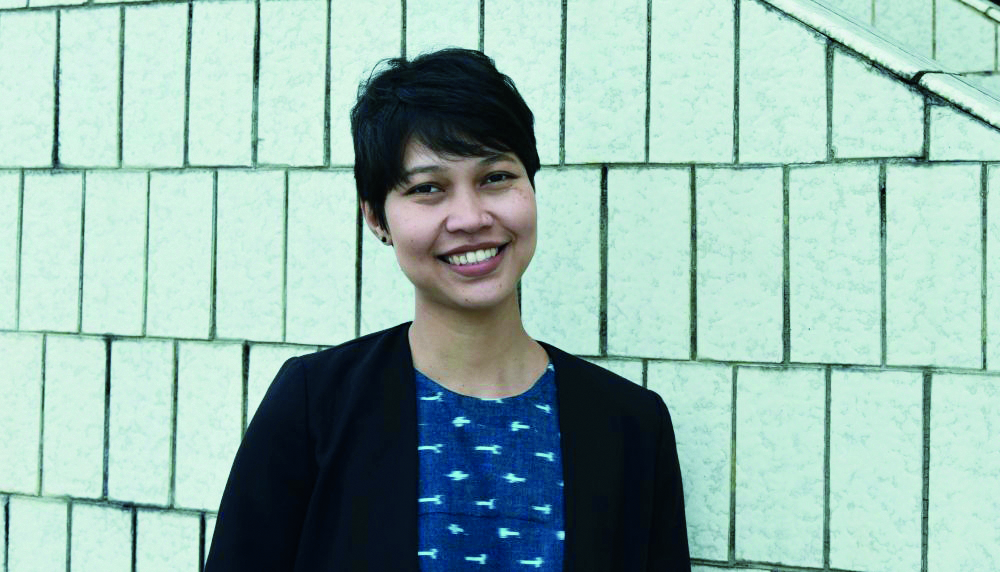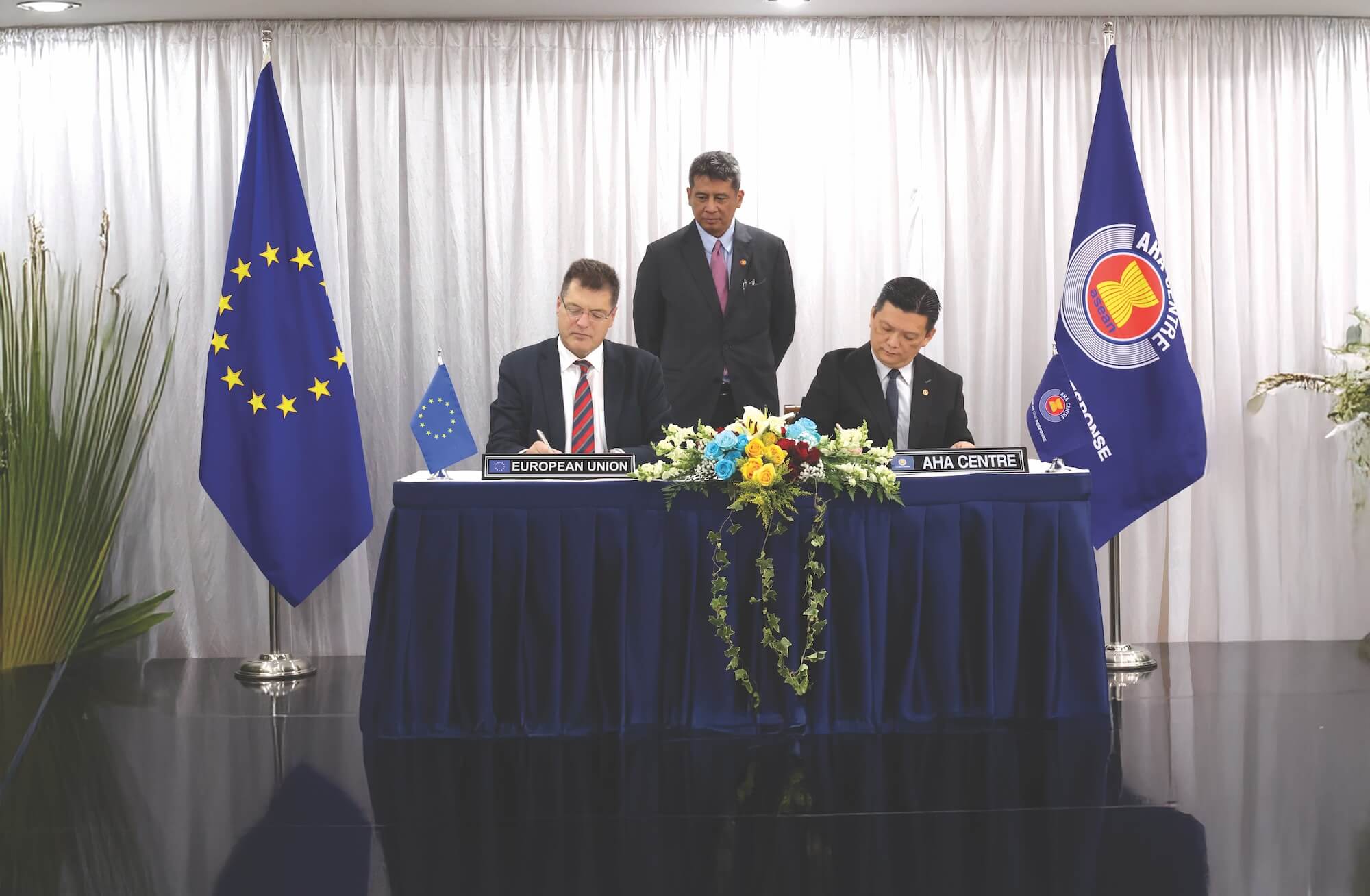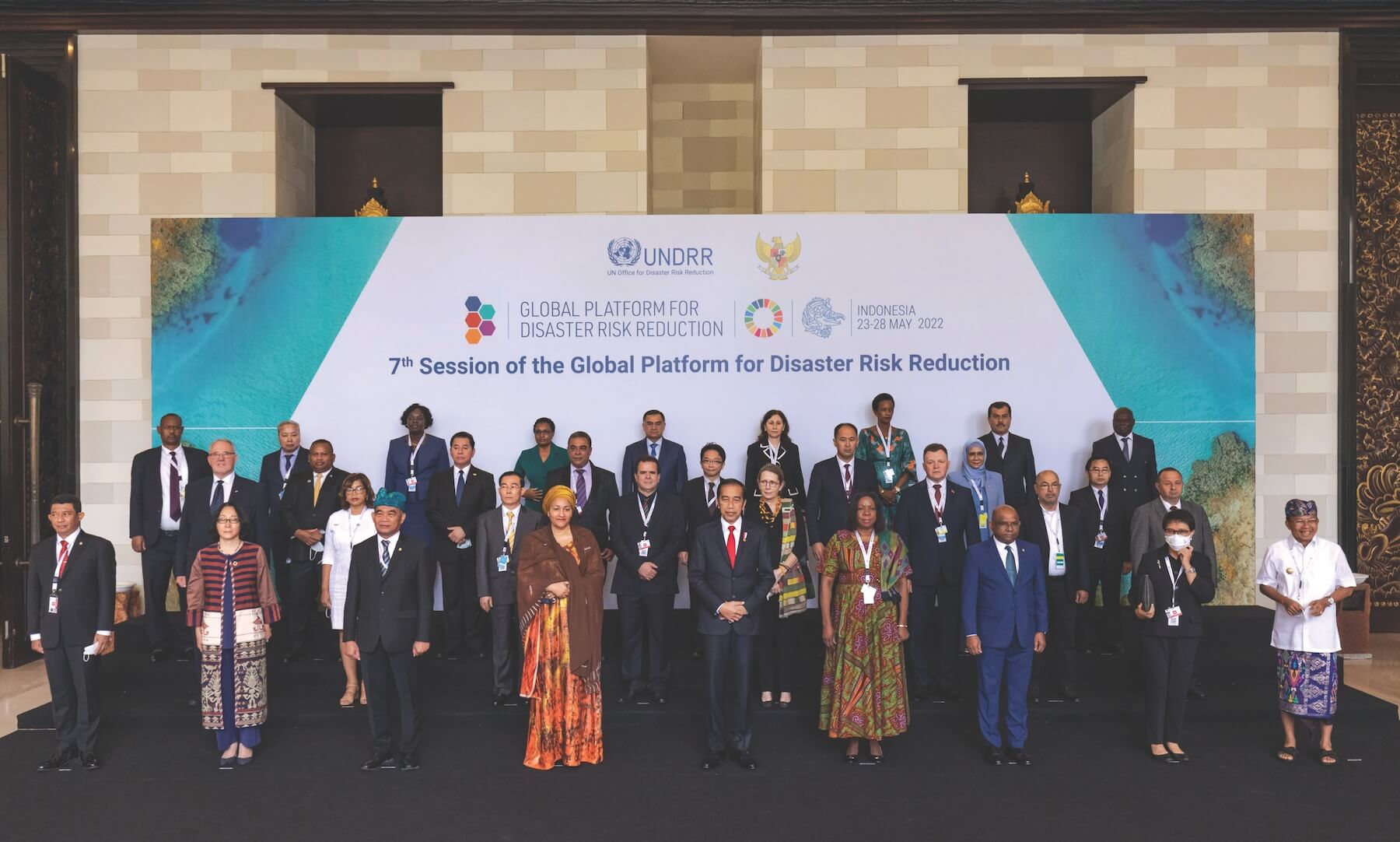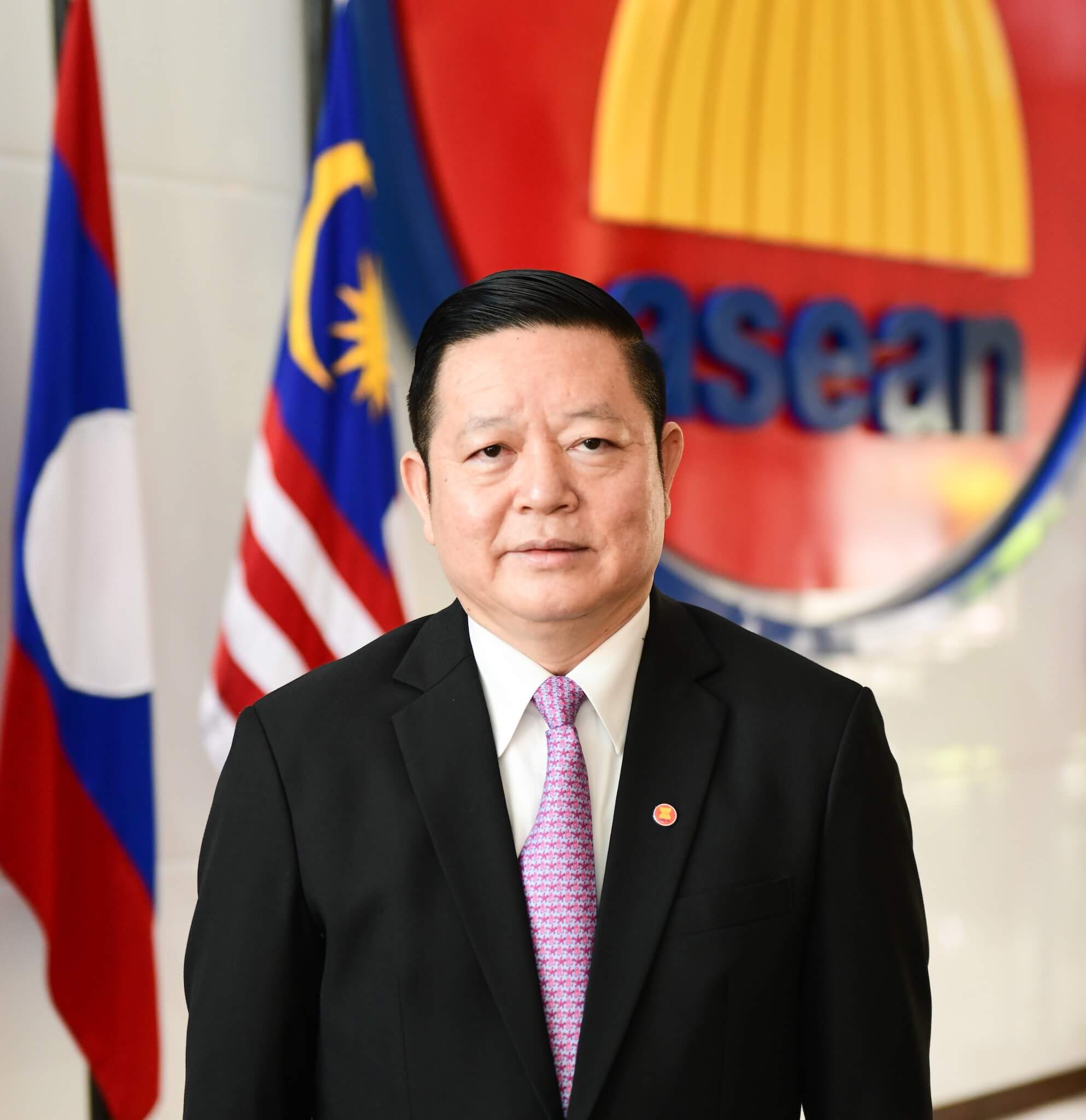




Three young graphic designers from the Philippines, Myanmar, and Malaysia showcased their creative interpretations of what ASEAN means to them, at a week-long ASEAN Identity logo exhibition recently held at the ASEAN Secretariat, Jakarta.
The three beat hundreds of other submissions from across Southeast Asia, in the ASEAN Identity Logo Design Competition that concluded at the launching ceremony of 2020 Year of ASEAN Identity on 21 January.
In addition to originality, adaptability, relevance to the theme, and aesthetics, their designs were chosen based on how well their works reflected youth’s aspirations.
The winning logo, designed by Joemari Manguiat, depicts a blooming flower with red, blue, and yellow to represent colours found in ASEAN Member State flags.
“The blooming flower represents the unity of ASEAN, and the shape of a f lower portrays the cultural diversity and economic prosperity of each country,” the 26-year-old Manguiat said at the opening of the exhibition, which also marked the launch of the 2020 Year of ASEAN Identity.
The winning logo will be featured in various ASEAN Socio-Cultural Community materials and high profile events throughout the year.
In second place was 24-year-old Swumm Htet Naing from Myanmar, who designed a bouquet of flowers which represents ASEAN community and reflects the beauty of each ASEAN country. A graduate of Forestry studies, Swumm also took inspiration from flowers and tree leaves.
In third place, a colorful diamond-shaped logo, was designed by Mohd Firdaus Abd Hamid from Malaysia. It symbolises the diversity of Southeast Asian people, who come from various walks of life but are united under ASEAN.
Deputy Secretary-General of ASEAN Socio-Cultural Community Kung Phoak said that the logo competition was a way to foster greater public awareness among ASEAN citizens, especially the youth, on ASEAN and its activities and developments.
The winners shared that their participation in the competition gave them an opportunity to understand ASEAN better. They all had to learn everything they could about ASEAN before translating their ideas onto the design table.
“I know ASEAN is an association, but I don’t really know what it does. After doing some research for my design and listening to the discussion here, I know that ASEAN has a lot of programs that contribute to the development of its people,” Firdaus said, referring to a discussion on ASEAN Identity held during the launch.
Swumm shared a similar view, saying that the competition was like a gateway for him to learn more about ASEAN. He hoped that he could contribute his skills to future activities that will promote ASEAN in his home country, Myanmar.
Meanwhile, Manguiat wished for ASEAN to continuously reach out to young people in many ways, especially through a platform that is so attached to them nowadays—social media.
“Social media is huge— most young people are on it. ASEAN should create interesting content to reach out wider to youth and spread it through social media,” he said.








